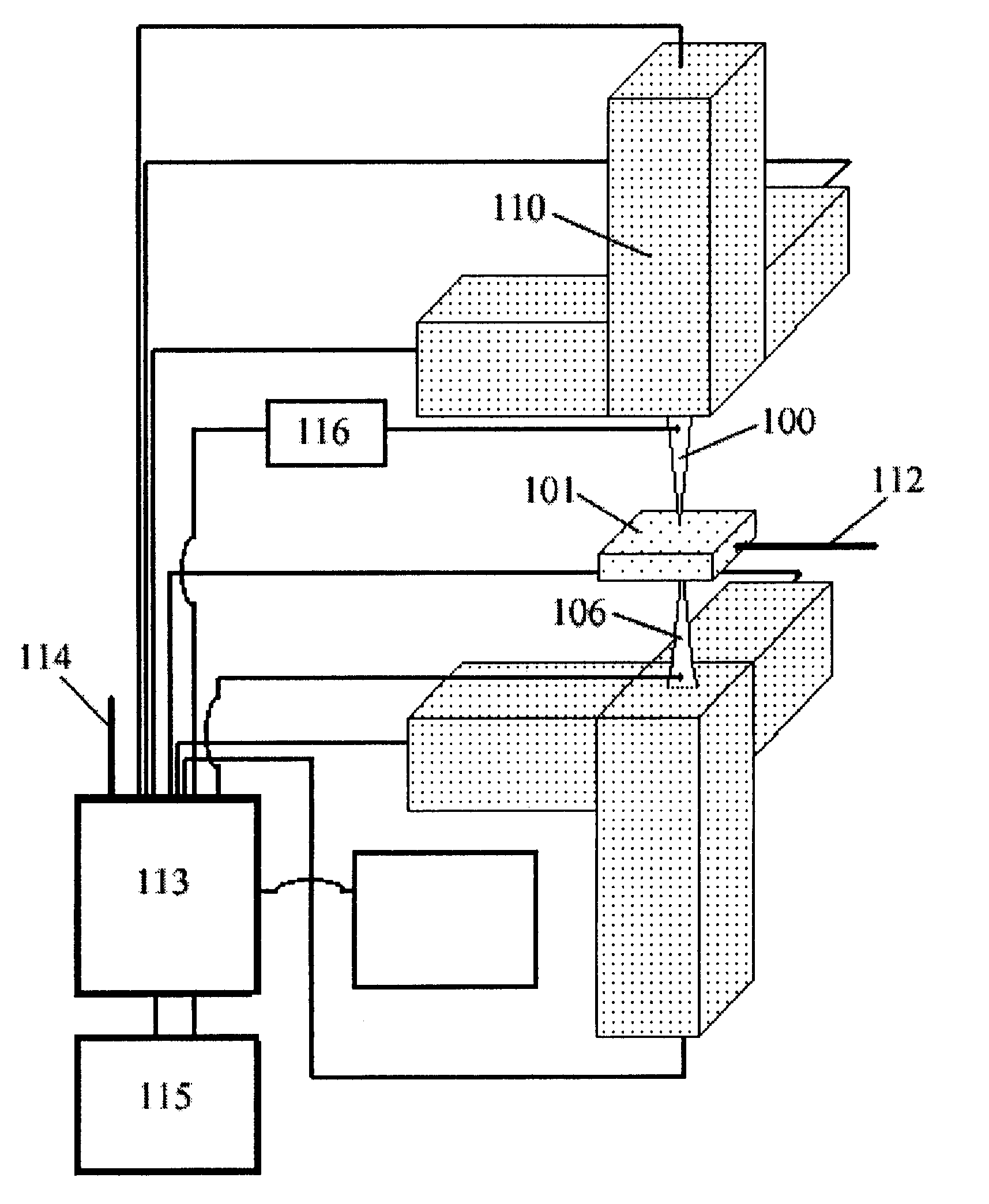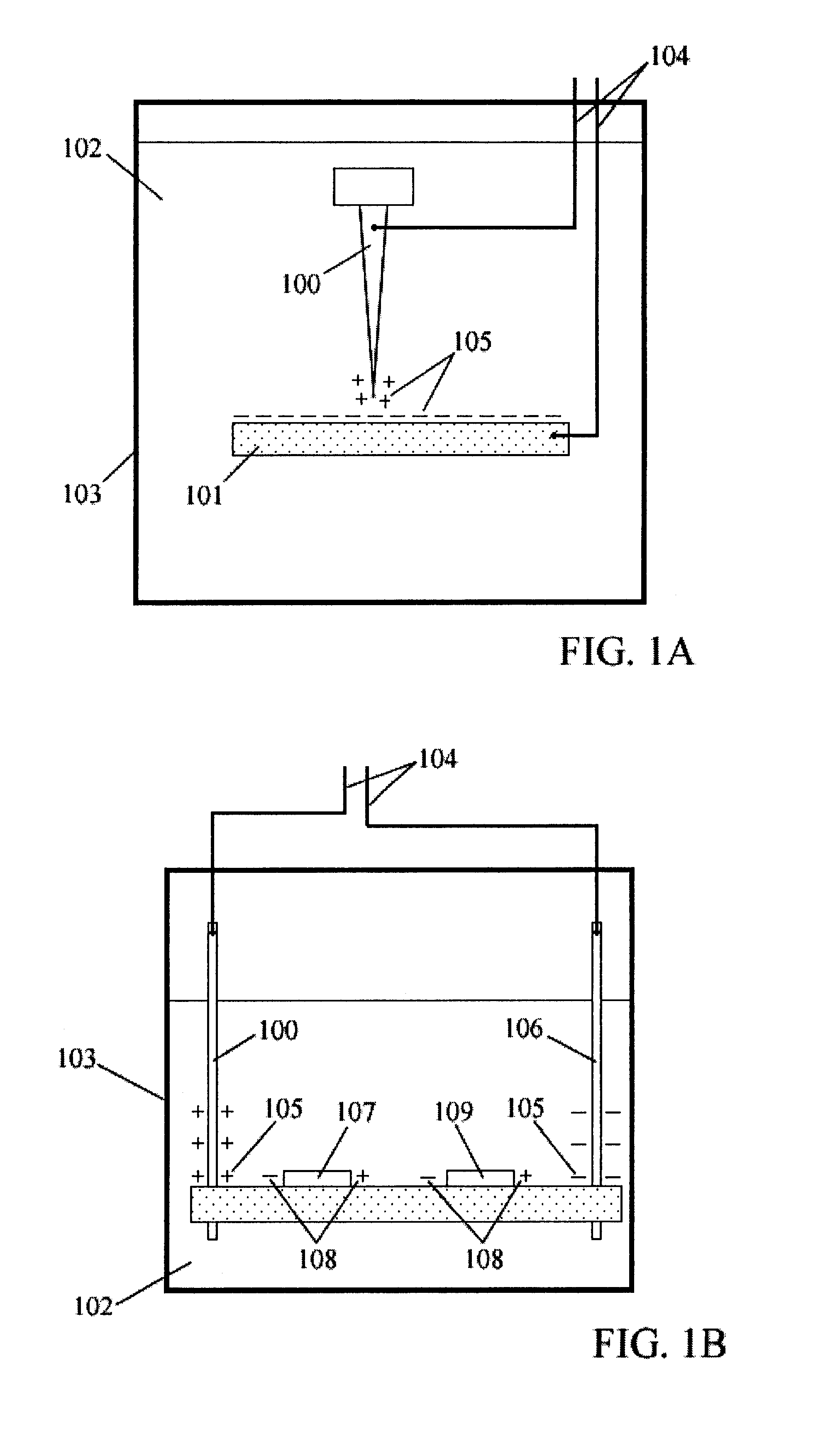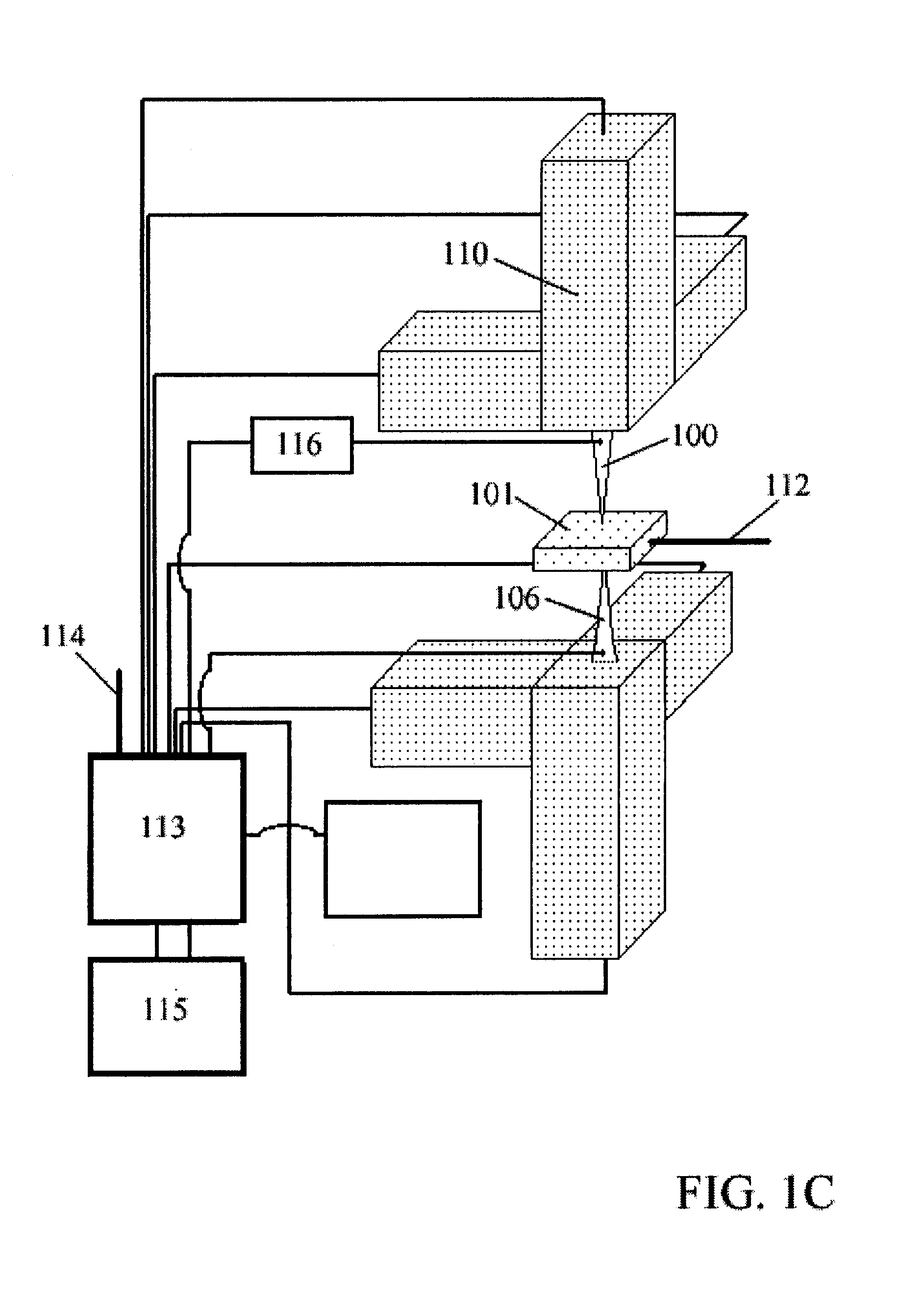Technique and process for the imaging and formation of various devices and surfaces
a technology of imaging and surface, applied in the field of process for imaging and surface formation, can solve the problems of unipolar electric field created between two oppositely charged very sharp tip probes, unfavorable and unpredictable variation of devices, and destruction of the surface of the substra
- Summary
- Abstract
- Description
- Claims
- Application Information
AI Technical Summary
Benefits of technology
Problems solved by technology
Method used
Image
Examples
Embodiment Construction
FIG. 1(a) is prior art, in which probe 100 and substrate 101 are submerged in a electrolyte solution 102. A voltage is applied to wires 104, which creates opposite surface charges 105 on probe 100 and substrate 101. The voltage is supplied in a very short pulse. Dependent on the direction of the applied voltage either pits can be created in substrate 101 or material can be deposited on substrate 101, formed by the reduction of ions from solution 102. In this process substrate 101 can not be an insulator, can use cantilever type probes, and can operate within or out of a medium, if used to etch materials.
As used herein, a "substrate" can be any form of soluble or insoluble insulator, semiconductor, polymer, dielectric, or any form of resist; it is the object that is being patterned, patterned on, or existing between the patterned objects. "Material" can be any single or group of elements, molecules, polymers, colloids, or resists that can be transformed, ionized or made into a dipole...
PUM
| Property | Measurement | Unit |
|---|---|---|
| temperature | aaaaa | aaaaa |
| temperature | aaaaa | aaaaa |
| thickness | aaaaa | aaaaa |
Abstract
Description
Claims
Application Information
 Login to View More
Login to View More - R&D
- Intellectual Property
- Life Sciences
- Materials
- Tech Scout
- Unparalleled Data Quality
- Higher Quality Content
- 60% Fewer Hallucinations
Browse by: Latest US Patents, China's latest patents, Technical Efficacy Thesaurus, Application Domain, Technology Topic, Popular Technical Reports.
© 2025 PatSnap. All rights reserved.Legal|Privacy policy|Modern Slavery Act Transparency Statement|Sitemap|About US| Contact US: help@patsnap.com



